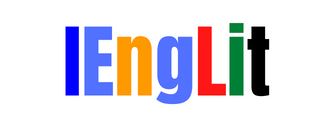Introduction of the Poem:
The poem “The Bangle Sellers” was first published in the year 1912 by Sarojini Naidu in her collection of poems called “The Bird of Time”. The poem is associated with bangles and the implementation of role assigned to a woman in a traditional Indian society. The poetess makes strong connections between the bangles and their role in giving happiness to daughters, wives and mothers. The poetess shows that the bangles which the hawkers sell are of religious and symbolic importance. No widow is allowed to wear the bangles. Hence the wearing bangles is considered to be very auspicious and of great symbolic value for married women and aspiring brides.
 |
| Poem The Bangle Sellers— Theme, Summary and Critical Appreciation |
The significant factor of the poem is that the bangle seller does not say a word about his poverty, miseries and hardships, nor does he say anything about the profit or loss. He sells the product of religious and spiritual significance with full of enthusiasm and shows no signs of unhappiness. While selling the bangles he remains calm and in joyous mood. His focus is only on the human element associated to bangles. The poem is a lyric which depicts the social and cultural life of Indian women through various images associated with bangles.
Summary of the Poem:
The poem begins with the speakers introducing themselves as bangle sellers who sell their articles at the temple fair. They call out to the people to buy their bangles. These hawkers describe their bangles as delicate, bright, rainbow tinted circles of light. They advertise by questioning who will buy these bangles for their daughters and wives.
The second stanza onward, the speakers talk of the kinds of bangles they have. Some of these bangles are suited for a maiden's wrist. They are silver and blue in colour like the mountain mist. Some of them are ‘flushed’, that is pink and light red in colour like flower buds growing beside a woodland stream. Still others are bright green like the colour of new born leaves.
Next, the bangle sellers say that some of their bangles are yellow like ‘fields of sunlit corn’. Bangles of this colour are perfect for a bride on her bridal morning. Some of the bangles they have are bright red. They represent the flame of a newly turned bride's marriage fire, that is, the passion of her newly made relation. The red bangles also stand for her heart's desire. The bangles are ‘tinkling, luminous, tender and clear’. They express both her joy of starting a new life with her husband and the sorrow of leaving her parents behind.
In the final stanza of the poem, the speakers continue to advertise their bangles. They shout that some of their bangles are purple and gold flecked grey. These are suited for middle - aged woman who has journeyed through life. They are for her who has raised her children well and has remained faithful to her husband and family. They say that these bangles are perfect for she who has maintained her household with pride and has worshipped the gods at her husband's side.
Theme of the Poem:
The poem explores the life of Indian women, the Indian culture and traditions revolving around women. It revolves around the bangles, which is an important ornament for embellishment of women in Indian society. It is an expression of stages in a woman's life in traditional Indian society. The entire concept of making connection between different coloured bangles and their role in imparting happiness to young maidens, brides, wives and mothers is rooted in Indian culture.
In the poem, the poetess shows how the Indian woman is whole - heartedly submissive in fulfilling her social, religious and spiritual responsibility in this male dominated society. Many hints of patriarchal set up are found in the poem. A man performs an important role in woman's life as a father, husband and son. The last four lines have been criticised as a tacit approval of patriarchal ideology by the poetess. In the last four lines the poetess says that the hands of the middle - aged married woman have cared , loved , blessed and brought up her fair sons and she has proudly served her family and has the honour of sitting by her husband's side at religious ceremonies . In fact the poetess has showed feeling of gender discrimination in the male - dominated society of India.
The poetess also describes the pathetic and miserable state of the life of the bangle sellers who, in spite of suffering through many hardships and bearing the loss or profit sell the bangles in joyous voice and never make any grudge with their profession, but feel proud of selling the bangles which are a human product of religious importance.
Critical Appreciation of the Poem:
Introduction:
The poem entitled The Bangle Sellers belongs to the third section of Indian Folk Songs of her second book, The Bird of Time. This poem is a perfect epitome of typical Indian scene. It draws our attention of the social, religious and symbolic value of the bangles in Indian culture. The wearing of bangles is suggestive of happiness, joy, peace and prosperity. The poem glorifies the idea of Indian woman hood. In the poem, the bangle seller tries to convince the buyers of the spiritual and symbolic importance of his bangles in a traditional Indian setup. Each stage of an Indian woman's life has been described according to the colour of bangles suitable at that stage from a dreamy maiden to an excited bride and finally to a mature matriarch.
Thought – Content:
Bangle sellers take their load of bangles to the temple fair to sell them. The bangles are termed as ‘lustrous token of radiant lives’ which mean that they are symbols of love and happiness in people's lives. The bangles are made for happy daughters and wives. The poetess says that some of the bangles the unmarried women and they are of silver and blue in colour. The other are made for bangles made for the bride glow like the fields of corn during morning. Those bangles glow like the bride's marriage flame and rich in her heart's desire. The bangles are tinkling with luminous colours like the bride's laughter or tears. Some bangles are made for the elderly women who have journeyed through half of their life. These bangles are of purpled in colour with gold flickers. These women have served their household well, cradled their sons and have worshipped the household gods with their husbands beside them.
Moral of the Poem:
The poem stands out as a social message that not only discusses the lives of Indian women but also the lives of bangle sellers. Although the poem focuses extensively on the stages in the life of women, it portrays the lives of the bangle sellers as well. Not once is the poverty or the hardship on their vocation mentioned in the poem save the ‘shining loads’, which denotes the heaviness of the bangles. The bangle seller employs a joyful voice which makes us forget that their livelihood depends on the sale of these bangles. The women in their lives are all portrayed as happy, probably because the happiness of the bangle - seller relies upon the happiness of these women.
Form and Structure:
The poem is lyrical in tone. It has been written in the style of folk song which glorifies the ideal Indian women. It is a part of the poetess’ folk poetry. It is simple and contains vocabulary and imagery from everyday life and sights. It is remarkable for its verbal melody. It gives expression to the single emotion or feeling of happiness. Like any other good lyric, it is a well - knot poem, possessing a definite structure. It has been divided into four stanzas. The first provides a setting and introduction. Each of the subsequent stanzas deals with an important stage in an Indian woman's life. The rhyming scheme adds life to the lyrical folk song of the bangle sellers. In each stanza, first line rhymes with the second, third with the fourth and fifth with the sixth. The rhyme scheme is aabbcc.
The Use of Imagery:
An effective colour imagery has been used by the poetess in the poem. The imagery of ‘rainbow – tinted’ bangles has been used to refer to multihued bangles pointing towards different directions of hopes, dreams, youthfulness and aspirations of a woman. The visual imagery of mountain mist is also very profound as the mist on the mountains can be appreciated with its changing colour which is sometimes silver and sometimes blue. Yellow colour for the bridal morning and red or orange for the bridal night represent passionate longings in heart of a bride. Purple and gold for motherhood represent women's feelings of pride and fulfilment in her married life. The only auditory image used is ' tinkling ' which comes into use only when the bangles are worn.
The Use of Figures of Speech:
Metaphors are used to describe the colours of the bangles such ‘Rainbow tinted circles of light’ and ‘lust - tokens of radiant lives’.
There are some instances of simile: 1. ‘Some are flushed like the buds that dream.’ 2. ‘Some are like fields of sunlit corn.’ 3. ‘Silver and blue as the mountain mist.’
The poetess has used the figure of speech alliteration in the third stanza of the poem.
“Some are like fields of sunlit corn,
Meet for a bride on her bridal morn,
Some, like the flame of her marriage fire,
Or, rich with the hue of her heart's desires
Tinkling, luminous, tender and clear
Like her bridal laughter and bridal tear.”






